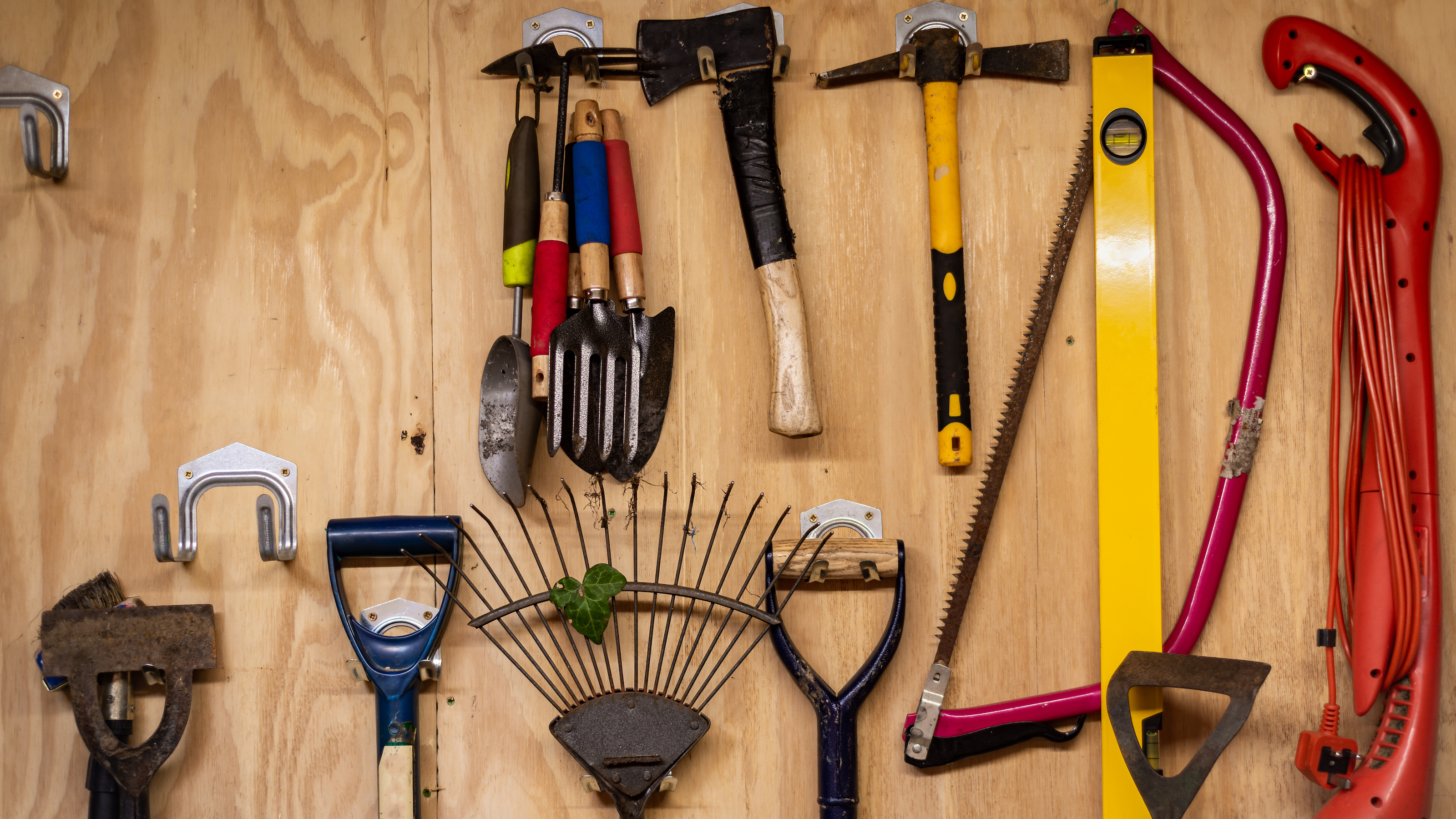How to save money on energy bills in a rented flat
When you're renting, improving your home's energy efficiency can be challenging. But there are still things you can do — our experts explain all

If you’re living in a rented flat, it can be tricky to know what measures you can take to reduce your energy bills — and what your landlord is responsible for.
We put this energy saving tips challenge to four energy experts: Paul Testa, an architect with a special interest in energy efficient homes; Marianne Suhr, a chartered building surveyor specialising in old homes and the co-author of Old House Eco Handbook published by Quarto Group; Paul Ciniglio, refurbishment lead with the National Energy Foundation; and David Hilton, a specialist in residential heat and energy systems.
We asked them to assume that the flat is in a converted old building that has gas central heating but has had little or no investment in energy-efficiency measures. What could be done for different budgets to reduce bills?
What improvements can you make with £200?
Let’s start with an investment of up to £200: Even with this modest outlay you’ll soon reap the benefits of a warmer and cosier home that’s cheaper to heat.
Architect Paul Testa starts with one that’s free: Turning down the boiler flow temperature on your combi boiler, which could save around six to eight per cent on your heating bills.
Paul Ciniglio suggests replacing incandescent light bulbs with LEDs (here's our recommended best LED bulbs), as a way of shaving 80 per cent off lighting bills. “Thick lined curtains for the windows would also definitely make a difference to heating bills,” he says.
Marianne Suhr offers a couple of other easy, no-cost wins: “Make sure the boiler is working properly and ensure the landlord has serviced the boiler.”
Next, some detective work is needed. “On a windy day, go round the apartment, run your hand across windows and doors to see where draughts are,” says Marianne.
Now you can carry out some DIY draught proofing to stop warm air escaping. Paul Testa advises: “Some sealant or airtightness tape at key junctions/around windows will make a big difference to comfort and energy use. This is easy to do, shouldn't upset your landlord and isn't so involved that you'll lose lots of money if you need to move.”
Radiators and fireplaces are next on the list. “If you have radiators on external walls, fit reflective blankets behind them and take them with you when you move,” suggests Marianne Suhr. Expect to pay around £30 for a pack of three. If you're wondering: 'do radiator reflectors work?' take a look at our piece on them.
“And if you have an old fireplace, particularly one that’s not in use, check that it is not letting in draughts, and if it is, fit a chimney balloon.” An alternative is a chimney sheep made from sheep’s wool; both products cost from around £20 and will stop cold air coming down the chimney. Again, they can be taken with you when you move.
What draught proofing you can do with £2,000?
At this stage, it’s debatable whether you or your landlord picks up the bill. “The issue with a rented apartment is the lack of period in which to see pay back. I'm not sure I'd want to spend more than £2,000 on the works,” says Paul Testa. “Given gas prices, you'll see £2,000 paid back pretty quickly and feel the comfort benefits, but any more than that and I'd be asking the landlord to pay.”
Whoever is paying, the experts agree that insulation is critical.
“If your apartment is on the top floor, then the loft insulation is very important,” says Marianne Suhr. “Establish with the neighbours or management company where the financial responsibility lies — ideally you’d want 300mm-thick, well-fitted insulation.”
Expect to pay around £500 for insulating a roof, including professional installation — if you install the insulation yourself that figure could be halved.
Installing double glazing is unlikely to be a sensible investment for a tenant, but putting in good secondary glazing for the colder months could be a smart move, particularly as the glazing can be taken with you.
“The best thing you can do is invest in good secondary glazing,” says Marianne. “However they can’t be opened, so they are only suitable for windows that remain closed in the winter.”

She suggests a temporary plastic magnetic system from a manufacturer such as Magneglaze that is clipped into place in the autumn and removed when the spring arrives. “Come spring, you can take them off and store them in a duvet cover, to stop them scratching.”
Expect to pay £100 per square metre; installation costs increase the bill but many temporary magnetic secondary windows can be fitted yourself.
“If you are only staying in the property for a year a cheaper option is to put plastic film over the windows,” adds Marianne. “It looks terrible though and isn’t the most effective.”
Paul Testa also suggests replacing the extractor fan in the bathroom with a heat recovery unit for about £600 including installation. This will make a big difference to comfort levels and help reduce heating bills, as moist air takes more energy to heat than dry air, he explains.
“Works at this level will likely need your landlord’s permission and won’t be completely disruption free. But installing a heat recovery unit will make a big difference without reducing air quality.”
What can I do with a budget of more than £2,000?
At these levels, you’re definitely looking at a programme of investment from the landlord — measures could include insulating the loft, installing cavity wall insulation, upgrading to an A-rated condensing boiler, installing double glazing and insulating pipes and tanks.
It’s also worth understanding what your rights are. The good news is that energy efficiency levels for rental properties are regulated by the government and tougher standards are on the horizon.
“The government is proposing that by 2025 the government all new rentals in England and Wales must meet the C standard of the Energy Performance Certificate (EPC) and by 2028, that standard will apply to all rented properties,” says David Hilton.
“I’d start talking to the landlord now to see if improvements can be made. Many landlords are acutely aware of the need to have properties with cheaper running costs as it improves their chances of finding and keeping tenants.”
What should I consider when moving home?
And finally, if you’re thinking about moving, check out the property’s energy efficiency before you move in, suggests Marianne Suhr.
“Speak to previous tenants if possible to find out about their energy costs. Flats that don’t have an external door are good in terms of energy use. And if there’s an apartment above and below, that could also lead to less heat loss if there isn’t adequate insulation in the floors.”
Look out for rentals with an EPC of C or higher — currently only around one-third of all rental properties in the UK meet this standard. Your new landlord must by law provide you with a copy of the property’s EPC when you move in. Alternatively, you can find out what the property’s EPC rating is via the government’s Energy Performance of Buildings Register.
David Hilton, Paul Testa and Paul Ciniglio will be speaking at the Homebuilding and Renovating Show in London from 30 September to 2 October.
Get the Homebuilding & Renovating Newsletter
Bring your dream home to life with expert advice, how to guides and design inspiration. Sign up for our newsletter and get two free tickets to a Homebuilding & Renovating Show near you.
Alison Wall is an experienced homes journalist, and former chief sub editor of Homebuilding & Renovating. She has interviewed countless self-builders and renovators regarding their projects, and has a special interest in eco builds. She is also renovating her 1970s home and garden, and has a particular interest in making her own home greener, having recently added solar panels, an EV chargepoint and a solar battery system.

